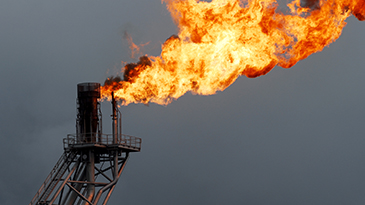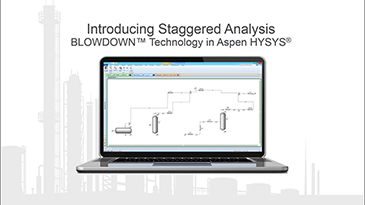Stranded in his home in the aftermath of Hurricane Harvey in Texas, Joe Bretch — a process safety engineer with Chevron — had a moment to reflect on his career. Over the call, Joe shared stories, learnings and how he is seeing process safety change.
How would you describe what you do?
If the person is not an engineer, I just say, “I am an engineer,” or else the person’s eyes get glazed over. If the person is an engineer, I tell them “I am in process safety,” and then usually it becomes a lively conversation. I say that I am part of the technical safety group supporting the entire enterprise of Chevron and work across all different types of assets, including refineries, onshore and offshore facilities, LNG facilities and gas plants, to improve pressure-relief systems and flare systems.
How did you get started in process safety?
I wandered into process safety out of college. I worked for a specialty consulting firm that does relief system design for two years and I really got to know this business. I found that once you mention your experience in safety, you can try to go elsewhere in engineering, but you are always going to be pulled into the safety arena. Those skills are hard to find.
Why is process safety exciting?
Well, if you don’t consider process safety, you put yourself at high risk. It doesn’t make money, but it does prevent lost money. In my job, I need to know a lot about everything, including hydraulics, heat transfer and how equipment like a distillation column operates. I get a taste of everything. I also enjoy finding opportunities for cost improvements.
What have you learned from working in process safety?
Equipment limits: “Never operate outside of the design limits of a piece of equipment” is a lesson I learned from an old-school project manager at the refinery I worked at. I saw this firsthand with the burners for a fired heater. If you operate the pressure too low, you can snuff out the burner flame and introduce unburned fuel gas into the heater, and if you operate the pressure too high, you can encounter flame lift-off where, again, the burner flame could be extinguished and large amount of unburned fuel gas could accumulate in the heater, creating a very dangerous and explosive environment.
As part of an SIS upgrade project, I looked at the plant operating data and found that several burners were operating too high (above the pressures on the burner curves). Just because that is how it has been operating, it isn’t necessarily how it should be operating — and it may not be safe.
Creativity: Early in my career, I worked on a project where we identified a bunch of heat exchangers where the design pressures were too low. In order to increase the design pressures, the heat exchangers needed new shells and tubes. By making a few simple tweaks and reconfigurations to the heat exchanger design, we were able to increase the equipment pressure rating (safer operation) and improve the exchanger’s heat transfer performance, which allowed for additional recovery of propylene.
Over the years, I have learned about the need for creativity and that there is more than one way to solve a problem. Sometimes, you can find a way to make a necessary safety fix seem more attractive.
Not giving into pressure: “If you ever feel pressured to compromise safety, walk away from the project” is another lesson I learned from the project manager at the refinery. I was working on a turnaround, and we were installing new PSVs. Unfortunately, the construction contractor had incorrectly welded the piping connections for the PSVs, which created additional edges or ridges for the PSV inlet piping. These unexpected rough edges created a situation that violated the 3 percent rule. I felt pressured to let it slide.
Following advice from a peer, I consulted with more people and more experienced engineers to look at the problem. With enough people confirming that it was a problem, the project finally agreed to fix the problem.
What excites you about the future of process safety?
Software is becoming much more prevalent in process safety analyses and can be such an important way to reduce capital, especially when capital is so competitive. Precise and accurate answers reduce conservatism in decision-making, but even if you know how to get to that level of accuracy, it is time-consuming. New software, like Aspen HYSYS®, streamlines calculations and workflows to reduce engineering hours and is more intuitive to use, making more advanced analyses accessible.
View the on-demand webinar Discover How Chevron Saved Significant CAPEX on a Staggered Blowdown Project to learn how the company used a staggered BDV opening sequence to eliminate $30M USD in flare system CAPEX.





Leave A Comment